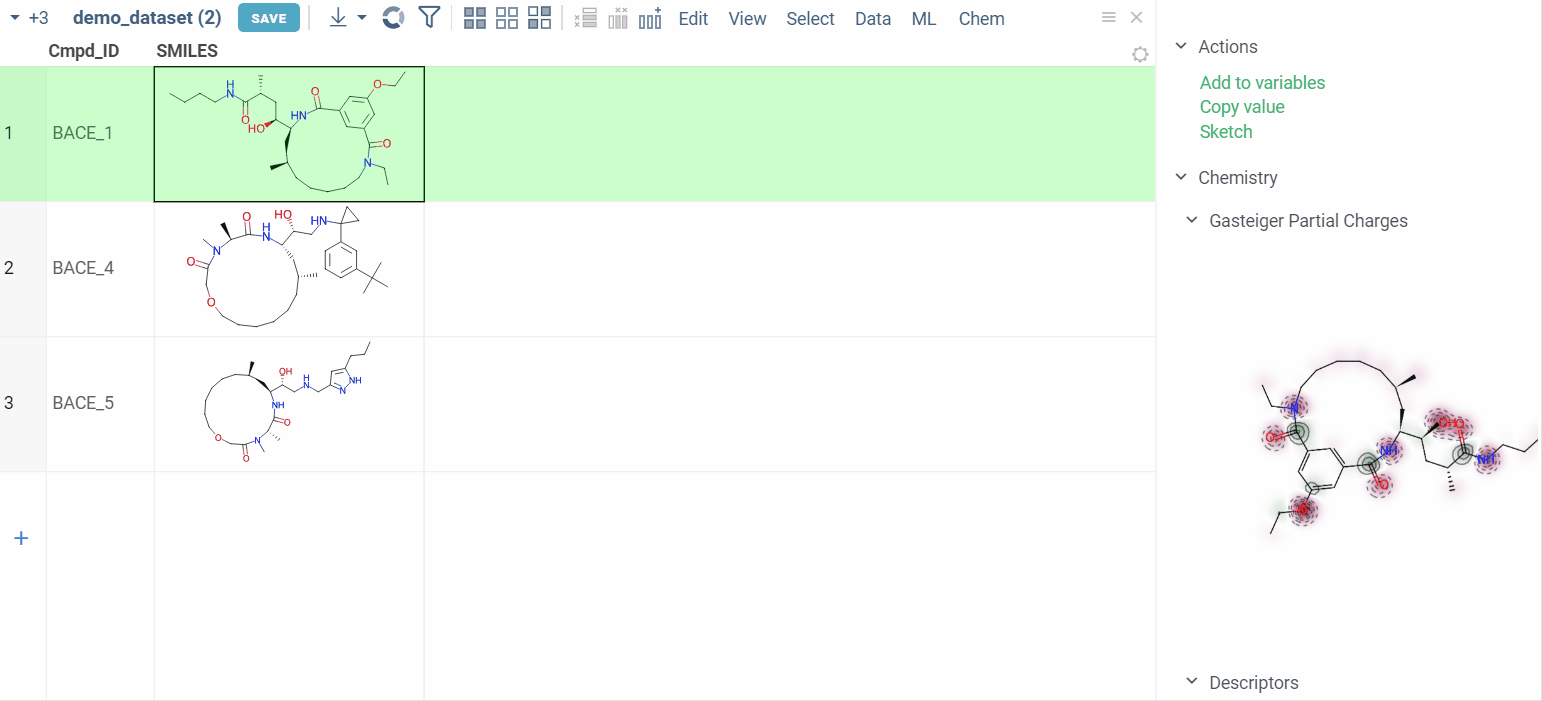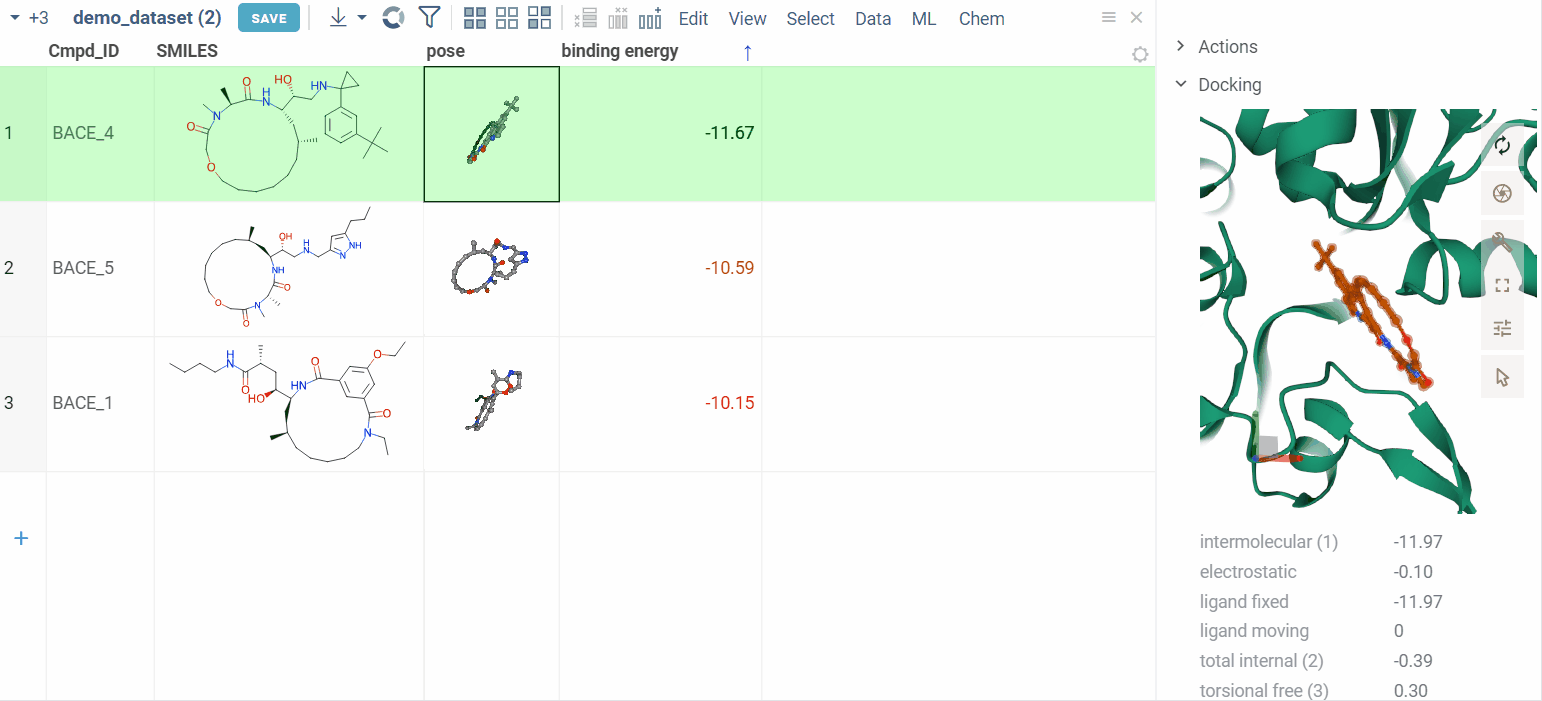The Docking package is a plugin that integrates the Autodock GPU utility with the Datagrok platform.
Autodock is widely used software for ligand-receptor docking that allows researchers to predict the binding interactions between small molecules (ligands) and macromolecule (receptor). The Autodock-GPU is a GPU-accelerated version of the Autodock software.
This package also provides a good example of Datagrok integration with external utilities. You can find more in the Datagrok Docker container howto.
Setting up docking configurations can be challenging, but we've streamlined the process. Usually, someone familiar with the docking tool, like a cheminformatician, manages the complexity by identifying a pocket, preparing a configuration using the desktop Autodock application, naming it, and saving it on a server under the targets folder.
Autodock plugin contains several pre-created targets.
To add your own macromolecule to the list of targets,
prepare the macromolecule using
AutoDock tools.
You require the macromolecule in the PDBQT format
and Autodock grid parameter file.
Review the Autodock tutorials
(first,
second)
for the details.
Put these files in a folder under System:AppData/Docking/targets. The folder make will be the name of your target in the Datagrok plugin UI.
Atomic maps note:
The autodock calculation fails if for a particular ligand
corresponding atomic maps not available.
To run docking on a big ligand dataset, we suggest including all available atomic map types:
A C HD N NA OA SA CL.
Create or load a dataframe containing the ligands to be docked. For demonstration purposes, consider using the provided demo data located under System:AppData/Docking/demo_files.
- Navigate to Chem > Autodock. A dialog appears.
- Configure the parameters:
-
Ligands: Specify the column within the provided dataframe that contains the small molecules to be docked. -
Target: Choose the folder containing the docking configurations and the macromolecule for simulation. -
Conformations: Define the number of conformations to search.
-
- Run the calculations
Performance note: During the first run for a target Autodock calculates the macromolecule grids. Grid calculation works on a single CPU core, so it can take about a minute. Datagrok caches calculated grids, so subsequent runs with the same target will be much faster.
When the results are ready, you can:
- View docking poses: The added column containing docking poses allows users to visualize the spatial orientation of each ligand within the binding pocket of the receptor.
- Check free energy: The column with free energy numbers provides users with quantitative information about the stability of each ligand-receptor complex.
- Zoom to pocket: By clicking on a pose, a Molstar viewer appears in the context panel. It automatically zooms to the binding pocket of interest, providing a closer look at the ligand-receptor interaction.
- Explore additional properties: Calculated properties for the selected pose allow users to explore binding affinities, interaction energies, or other relevant information for detailed analysis.

